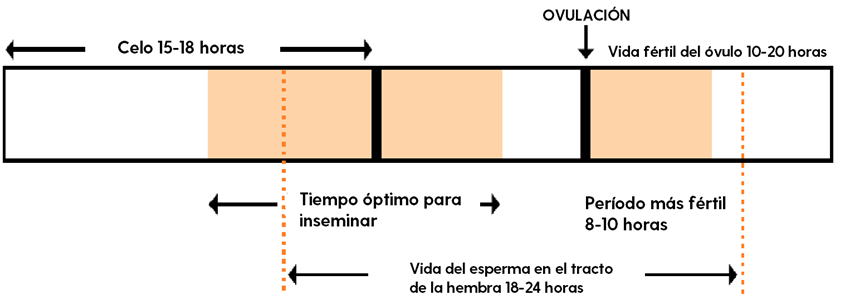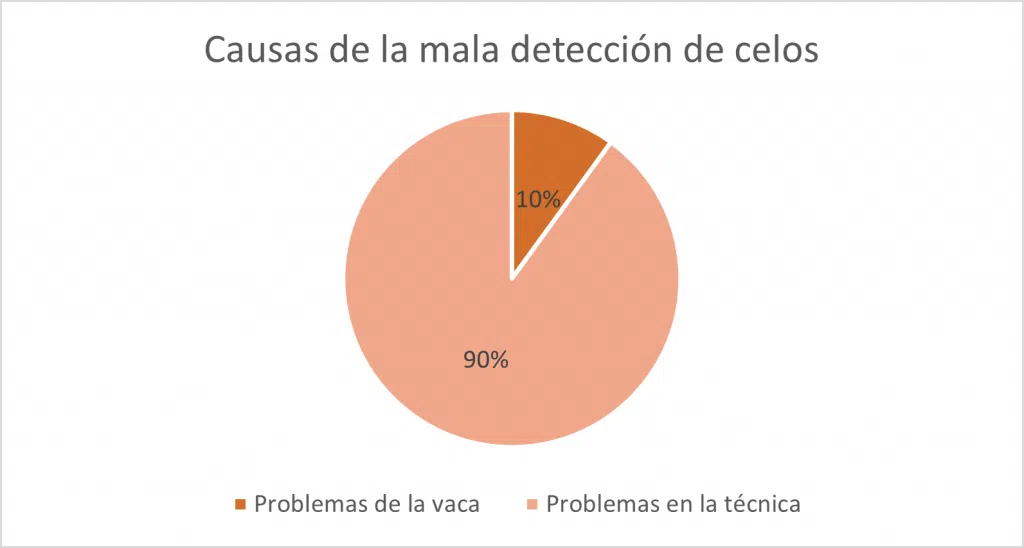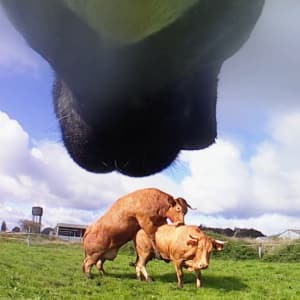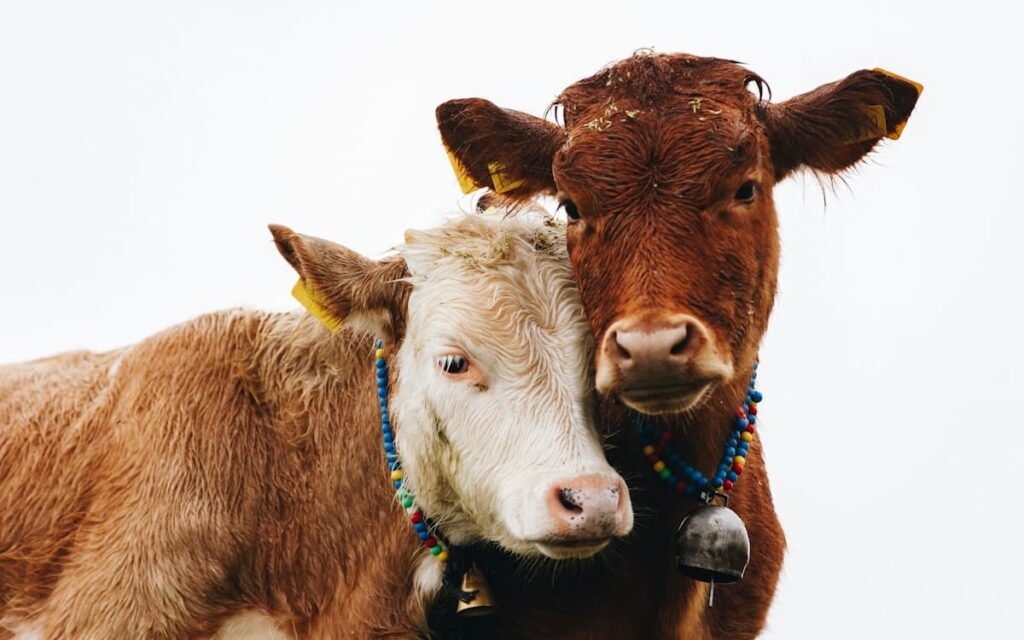What is estrus?
We have talked about colostrum and how to proceed after calving to take advantage of all its properties, but this is the end of a long road. For all this to happen, a gestation must first take place, either by artificial or natural insemination , and we must be attentive.
As in humans, animals also have periods of increased sexual receptivity. A cow is said to be in heat when her sexual receptivity increases, in order to facilitate copulation.
This occurs approximately every 21 days, and can vary from 18 to 24 days between oestrus and oestrus, and lasts between 12 and 18h, although it can also vary between 8h and 30h.
During estrus, estrogen production increases, so that it becomes the predominant hormone until ovulation, which occurs between 10 and 12 hours after the end of estrus.

How to detect heat in cows?
Behavioral changes
Mounting tolerance
When a cow is in heat, her behavior is affected and it is essential to differentiate and know the most characteristic signs of this state. The most evident is the tolerance to mating, since, as we have said before, her sexual receptivity increases. Therefore, when it is time to be mounted, the cow will remain immobile, with the spine arched, the hindquarters slightly raised and the tail deviated.
Secondary signs
Tolerance to mating is the only sure sign of estrus. Then, there are other signs that vary in duration and intensity and may occur before, during or after estrus.
While they are not as reliable as mounting tolerance, they can be used as clues to keep a closer eye on a particular cow and see if she does, in fact, become immobile in the face of a mounting attempt. Some of them are:
- Riding other cows: when cows are in or approaching estrus, they can ride other cow mates.
- Altered behavior: In addition to the above, there are other secondary but equally important behavioral changes. They are nervous, they moo continuously, they are much more attentive to their surroundings and their activity increases, remaining standing most of the time, unlike their companions.
- Increased social interactions: estrus causes them to become more sociable, so that they form groups with other cows and become closer and friendlier with them. Physically, we can see that they rest their heads on the rump of other cows and smell them, for example. This behavior is known as “Flehmen’s reflex”.
- Decreased appetite: as in many humans, they eat and drink less because they are nervous. Consequently, they also ruminate less and milk production decreases.
But, in addition, these behavioral changes are accompanied by physical changes that we can detect simply by looking around a bit.
Physical changes
- Mucous vulvar discharge and reddened vulva: Normally, when a cow is in heat, we can see that the vulva is more reddened than normal, or that a clear and transparent mucus hangs from it. In many cases this mucus can also be seen on the tail, thighs or perineal region. Conversely, there are occasions when it only appears on palpation of the cow during artificial insemination.
- Rubbed or matted tail hair at the base of the tail and dirty flanks: as mentioned above, cows often mount other cows when they detect that they are in heat and, when this happens, the skin on the tail and rump is rubbed, scratched or matted.
- Metrorrhagia: if we find bloody slime on the vulva or tail, we can know that the cow had an estrus that began approximately 48 hours earlier.
Causes of poor detection of jealousy
In 90% of the cases, the cause of poor heat detection is the technique used, either due to factors that reduce the expression of heat signs or poor observation by the farmer.

In the remaining 10% of cases, the problem is the animal and the causes may be multiple:
- Functional ovarian or follicular cysts.
- Silent zeal.
- Shortened, nocturnal or evening jealousy .
- Or simply have irregular cycles.
How to detect estrus by observation
To detect estrus in a cow by observation requires great dedication and a lot of time. At least three daily observations of at least 20 minutes duration would be necessary and, even then, we would only be able to detect at most 80% of the estrus, since, as we have seen, there are some that take place during the night and others that can go unnoticed.
Rumi and the detection of jealousy
RUMI relies on these parameters to detect estrus in time. By monitoring the animal’s condition in real time, it is able to record the animal’s activity at all times (resting, walking, eating, grazing and ruminating).
We know that cows in heat increase their motor activity and decrease their intake and rumination. Rumi is able to pick up these behavioral changes and also takes into account other important events that have taken place previously, such as the date of calving or last heat.
Thanks to its own application, the farmer will be able to visualize all this and, with this, what we achieve is to allow him both to anticipate them and to be able to act in time.

Rumi is the Intelligent GPS Collar capable of detecting heat and much more.

